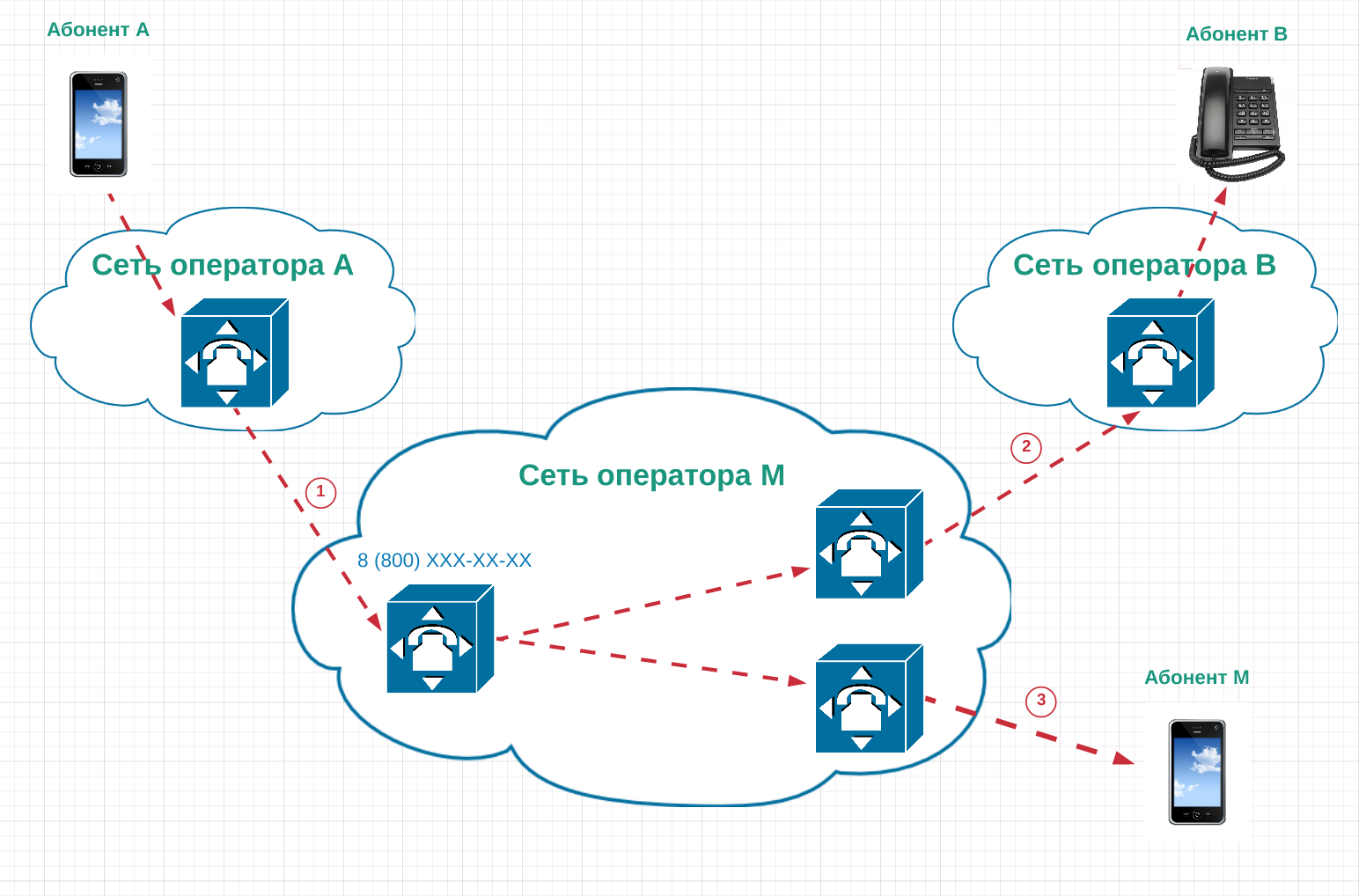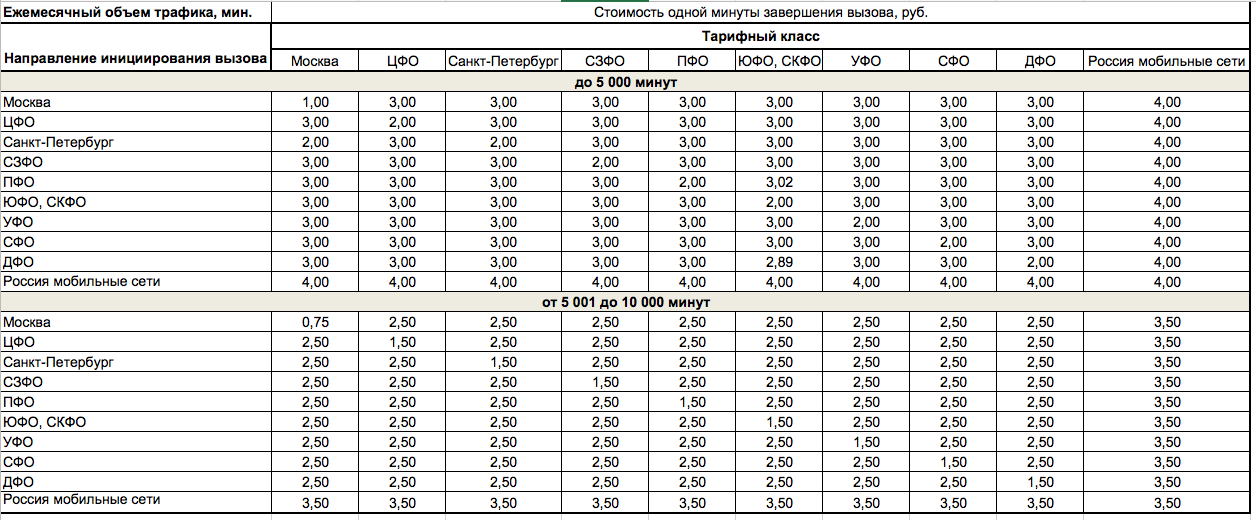Briefly and simply about the difficult - tariffing in "8-800"

In the previous post, we looked at “intelligent” routing and how it works in the “8-800” service. Today I propose to consider the issues of tariffing services "8-800".
The very possibility of charging a call to number 8-800 in the SS7 (SS7) protocol is implemented using the so-called Reverse Charging function. Initially, this function was created for the popular service Collect Call (call at the expense of the called subscriber). In detail from the point of view of the SS7 protocol, the REVC function (this abbreviation is often used for Reverse Charging) is described in ITU-T Recommendation Q.736.3.
Consider the call flow in terms of billing.
')
To simplify, let’s take the following conventions:
1. Subscriber A, Operator A makes a call to the number 8-800-XXX-XX-XX, which belongs to Operator M (Operator M - that no one would guess :)).
2. According to the rules of routing, a call to number 8-800--- is redirected to Subscriber B of “Operator B” or to Subscriber M of “Operator M” depending on certain conditions (for example, time of day).

So, the call from Subscriber A to the number 8-800--- goes to the MGMn switch of the Operator M. This switch of “Operator M” transfers the sign of REVC to the switchboard of “Operator A” (we will not dwell on protocol subtleties in detail), and in simple language reports that the call will be paid by the side of “Operator M”. Further, depending on the rule that worked, the call is established with Subscriber B or Subscriber M.
Upon completion of the call, the corresponding network nodes form CDR files ( Charging Data Records ). In this case, there will be two. The first is the CDR of the so-called “shoulder of initiation” (in scheme 1) and the second CDR of the so-called “shoulder of termination” (in scheme 2 or 3).
The first CDR will describe the cost of the call from Subscriber A to “Operator M”, the second CDR will describe the cost from “Operator M” to Subscriber B or to Subscriber M.
The total cost of the call will be equal to the sum of the two “shoulders” (CDR1 + CDR2 or CDR1 + CDR3).
Upon completion of the call, the 8-800 service platform generates the resulting CDR, containing information about both connections of the connection.
CDR Sample
Real numbers are replaced with X.
41,158148,, 607,, 800XXXXXXX, 7499XXXXXXX, 20161013112944,0,30,05,, 7926XXXXXXXX ,,,, 8800 ,,,,,,,,,, 11.05
And for this example, the cost of a call on CDR2 and CDR3 will be different, because CDR2 is the termination to the “foreign” network for “Operator M” of the “Operator B” network, and CDR3 - termination to its own network.
To simplify the process of tariffing, the so-called “Tariff classes” are used, when the initiation and termination directions are grouped by cost and placed in the tariff grid. In this tariff scale, for example, the vertical direction of call initiation, and vertically - the direction of termination. At the intersection, the actual cost per minute of the call is indicated. In addition, the tariff scale is collected in packages of minutes, in order to give discounts on the total volume of calls (as usual - the more minutes are spoken, the cheaper the cost of each minute).
Simplified Tariff Schedule
Cost and call directions are purposely simplified.


The logical question is, what about the tariffs for 8-800 types of “N rub. minute from any direction? "
Very simply - this is the conditional "averaging" of the cost per minute.
Another question - “And how much should the call cost to 8-800, which falls on the IVR of“ Operator M? ”At a minimum - the cost of an initiation arm (CDR1), and not free of charge, as many believe.
Obviously, it will not be possible to save a lot on the cost of a call to the number 8-800; often the majority of the cost will contain the first leverage.
The cost of the minute of the second “leverage” (termination) will differ by about a ruble in the case of using the redirection number belonging to the owner-owner of the specific 8-800 number and the “foreign” operator. Conclusion: it is more profitable to buy the number 8-800 from the same operator to which your main telephone number is connected. Additionally, you can reduce the cost of calls by connecting to the operator via a dedicated line. If for some reason this is not possible, then it is necessary to use the termination on SIP, as obviously the cheapest way to deliver traffic to your phone number.
There is another cost optimization tip. Numbers 8-800 are sold by many telecom operators. It is also known that most calls to 8-800 numbers are made from mobile numbers. Hence the conclusion: for a mobile operator, the cost of the first “leverage” will be cheaper, since a portion of calls to 8-800 subscribers (20-40% of all traffic) will come from its own network, therefore, you do not need to pay for these calls to interconnect . Therefore, hypothetically, the mobile operator can provide a more advantageous offer for the 8-800 service than fixed-line operators. "Operator M", at least, definitely can.
Source: https://habr.com/ru/post/315616/
All Articles